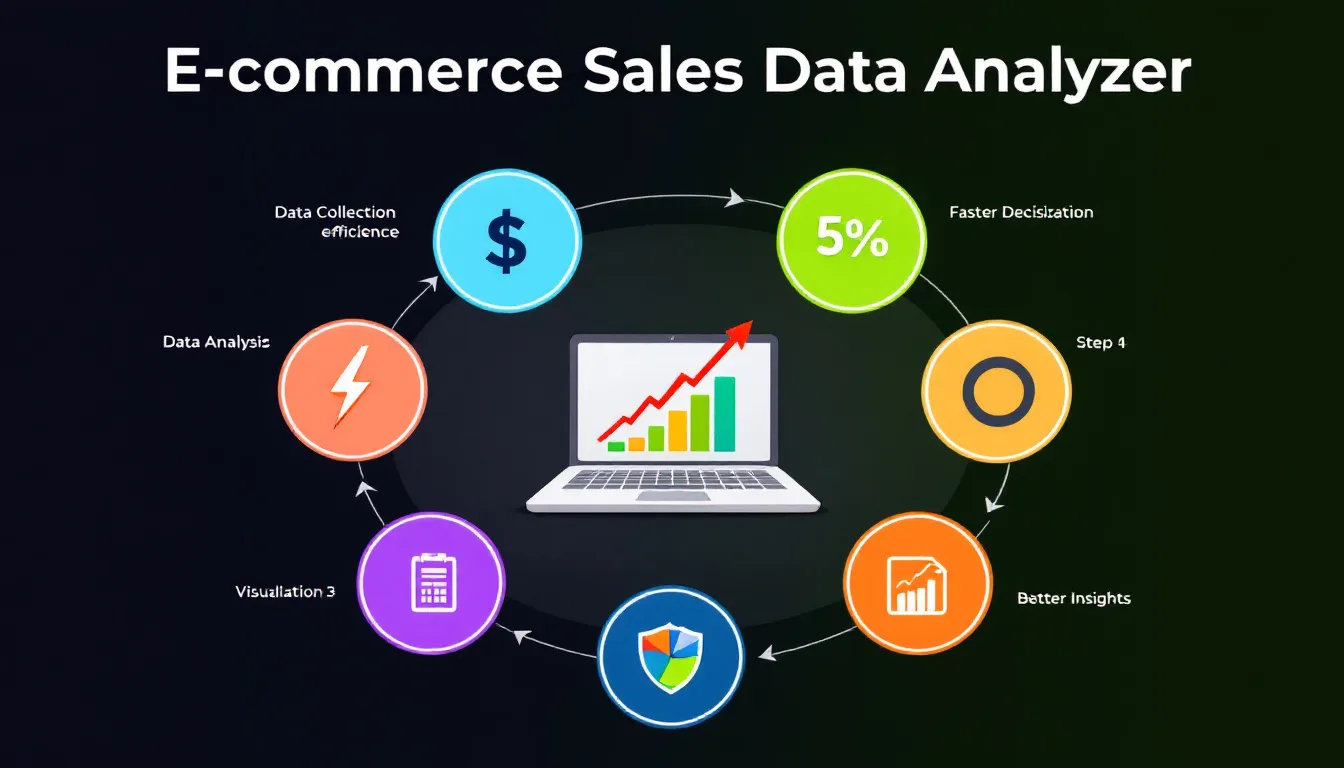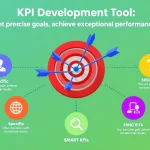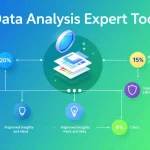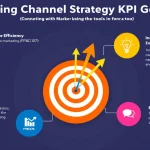E-commerce Sales Data Analysis
Is this tool helpful?
How to Use the E-commerce Sales Data Analysis Tool Effectively
Follow these simple steps to get the most accurate and actionable insights from the E-commerce Sales Data Analysis Tool:
-
Input Recent Sales Data: Enter your sales records with details such as product IDs, quantities sold, prices, and transaction dates. Examples:
- Product ID: 7890, Quantity: 120, Price: $15.50, Date: 2024-02-10
- Product ID: 4321, Quantity: 80, Price: $99.99, Date: 2024-02-15
-
Specify the Time Frame: Define the period you want to analyze. For example:
- “Last 90 days”
- “January 2024 – March 2024”
-
Enter Key Performance Indicators (Optional): If there are particular metrics you want to focus on, list them here. For instance:
- “customer churn rate, average order value, net promoter score”
- “repeat purchase rate, cart abandonment rate”
-
List Main Product Categories (Optional): Specify your primary product categories, such as:
- “Kitchen Appliances, Fitness Equipment, Beauty Products”
- “Books, Office Supplies, Electronics”
-
Provide Customer Demographics (Optional): Add relevant customer data like age groups or locations to refine analysis. Examples:
- “Age 25-34, Urban areas, USA”
- “Females, Europe, Income above $50K”
- Submit Your Data: Click the “Analyze Sales Data” button to process the information and generate your results.
- Review and Use Results: Study the insights provided to identify trends, performance gaps, and opportunities.
- Copy Your Analysis: Use the copy feature to save or share the results with your team or stakeholders.
Understanding the E-commerce Sales Data Analysis Tool
What This Tool Does
This E-commerce Sales Data Analysis Tool processes your raw sales information and delivers a detailed overview of your online store’s performance. By analyzing key aspects like product sales, customer behavior, and timeline trends, it helps you uncover actionable insights. The tool supports informed decision-making by focusing on metrics such as conversion rates, average order values, and customer demographics.
Purpose and Benefits for Your Store
Using this tool enables you to:
- Spot sales trends and seasonality to plan marketing and inventory
- Identify top-performing products and underperformers
- Understand customer demographics and buying patterns
- Optimize pricing and promotional strategies
- Forecast future sales and inventory demands
- Improve key performance indicators like conversion rates and customer retention
By automating complex calculations, this tool saves time, reduces errors, and customizes the analysis based on your specific needs.
Practical Applications: How to Leverage This Tool in Your E-commerce Business
Analyzing Seasonal Sales Fluctuations
Apply this tool to identify peaks and dips in product demand across different months or quarters. For example, you may find that outdoor equipment peaks every spring, enabling you to stock and market accordingly.
Customer Behavior Insights
Use the tool to break down purchase frequency, average order sizes, and popular product bundles among different customer groups. This helps you to tailor marketing efforts and loyalty programs to specific segments.
Product Performance Optimization
Discover which product categories or individual items contribute most to your revenue and which have high inventory turnover. Use this insight to adjust pricing or discontinue slow-moving products.
Conversion Rate Improvement
Analyze how different traffic sources or promotional campaigns affect conversion rates. Knowing that social ads convert better than paid search, for example, lets you reallocate budget for better ROI.
Forecasting Sales & Managing Inventory
The tool helps you identify sales trends and predict future demand. This means fewer stockouts or excess inventory, reducing costs and improving customer satisfaction.
Example Use Case
Consider an online pet supply store that enters sales data for the last 6 months, focusing on the categories “Pet Food” and “Accessories”. They specify KPIs like “average order value” and “customer retention rate”. The tool analyzes the data and finds that customers who buy premium pet food also frequently purchase accessories within 30 days, suggesting a bundled promotion opportunity. Additionally, the tool highlights a 15% rise in sales during holiday seasons, prompting the store to plan targeted campaigns.
Key Metrics and Formulas in E-commerce Sales Data Analysis
Important KPIs You Can Analyze
- Conversion Rate: Percentage of visitors who complete a purchase.
- Average Order Value (AOV): $$ \text{AOV} = \frac{\text{Total Revenue}}{\text{Number of Orders}} $$
- Customer Lifetime Value (CLV): Projected revenue from a customer over their relationship with your store.
- Repeat Purchase Rate: Percentage of customers who make more than one purchase.
- Cart Abandonment Rate: Percentage of shopping carts not completed as purchases.
- Customer Acquisition Cost (CAC): Cost spent to acquire a new customer.
How These Metrics Guide Decisions
By understanding these KPIs through your sales data, you can:
- Adjust marketing spend toward channels with the best conversion rates
- Offer targeted discounts to increase average order value
- Identify and nurture high-value customer segments
- Reduce cart abandonment via user experience improvements
- Calculate efficient customer acquisition budgets
FAQs About E-commerce Sales Data Analysis
How often should I analyze my sales data?
Perform a comprehensive analysis monthly to stay on top of trends. Monitor key metrics weekly or daily for timely adjustments.
What key metrics should I focus on?
Start with conversion rate, average order value, customer lifetime value, and repeat purchase rate. Tailor this list based on your business model and goals.
Can this tool help forecast future sales?
Yes. By analyzing past sales data trends and seasonality, the tool helps predict demand and optimize inventory management.
Is it necessary to provide customer demographic data?
It’s optional but provides deeper insights. Demographics help target marketing and understand purchasing behavior across different groups.
Important Disclaimer
The calculations, results, and content provided by our tools are not guaranteed to be accurate, complete, or reliable. Users are responsible for verifying and interpreting the results. Our content and tools may contain errors, biases, or inconsistencies. Do not enter personal data, sensitive information, or personally identifiable information in our web forms or tools. Such data entry violates our terms of service and may result in unauthorized disclosure to third parties. We reserve the right to save inputs and outputs from our tools for the purposes of error debugging, bias identification, and performance improvement. External companies providing AI models used in our tools may also save and process data in accordance with their own policies. By using our tools, you consent to this data collection and processing. We reserve the right to limit the usage of our tools based on current usability factors.







